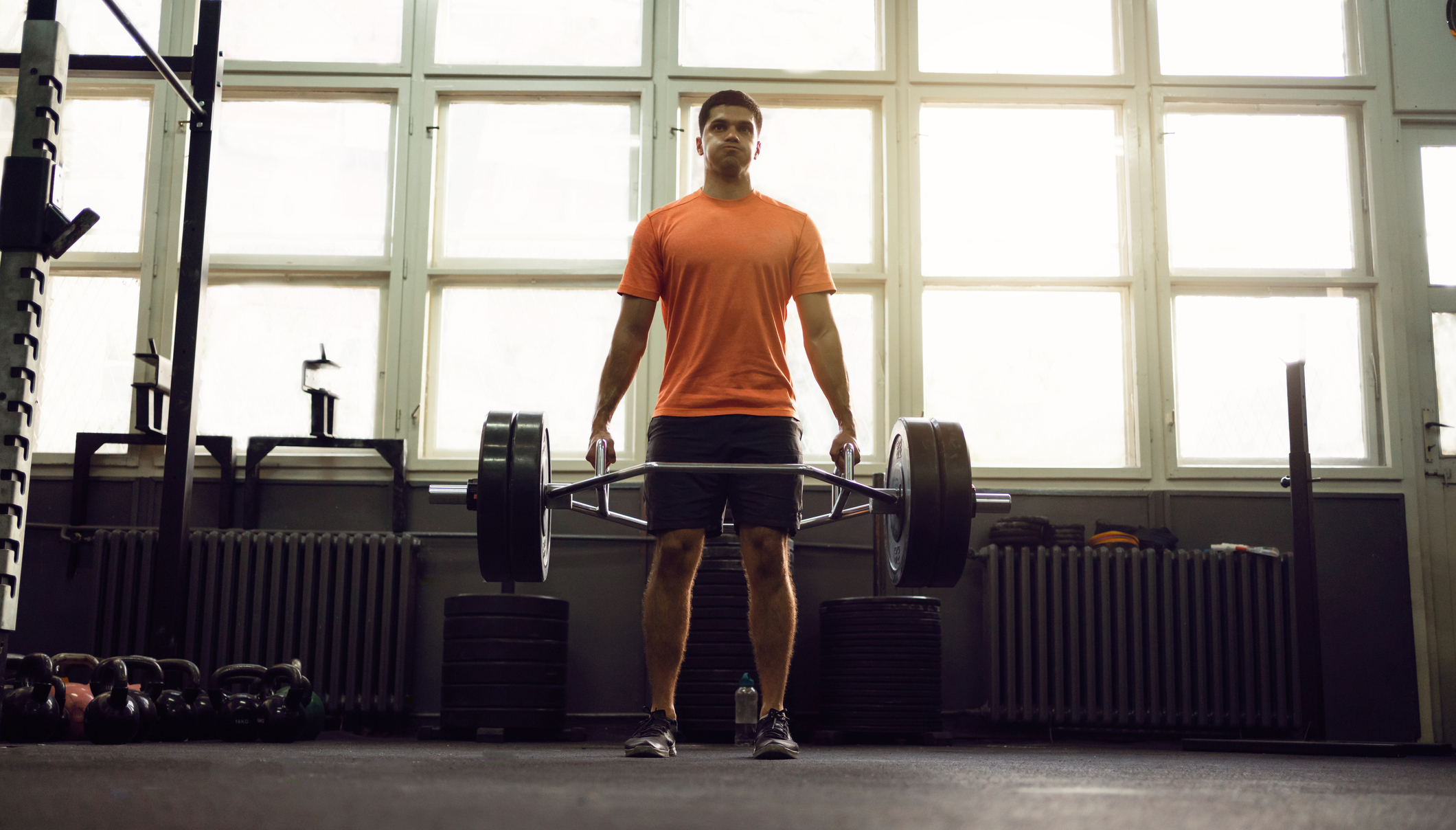A Sports Strength & Conditioning Workout To Build Power, Stamina And Strength
This superset gym session will help you excel in your sport

If you’re a keen sportsperson who only has time for one supportive strength and conditioning workout a week, then make it this one.
It’s a full-body session centered around contrast training; a technique that delivers plenty of bang (and brawn) for your buck by supersetting heavy compound lifts with explosive exercises targeting the same muscles.
Think barbell squats into a max-height squat jump, or bench press into plyo push-ups.
The theory is that the heavy exercise stimulates the nervous system, recruiting more motor units, then when you turn your attention to the dynamic move you’ll be able to activate more muscle fibers, enhancing explosiveness and leading to longer-term power gains.
“This workout is great for athletes who don’t have a lot of time for general conditioning outside of their sport, because it’s so efficient,” says its creator, personal trainer and Wild Training founder James Griffiths
“You use a heavy set to activate the muscle, followed immediately by an explosive exercise in a similar movement pattern. The fast-twitch focus helps to burn fat and improve definition while the superset nature of the workout keeps you breathing hard and sweating lots.”
For more sport-specific sessions, try this gym workout for football players, or the All Blacks’ upper-body workout.
Get the Coach Newsletter
Sign up for workout ideas, training advice, reviews of the latest gear and more.
How To Do This Workout
After a thorough warm-up (like this gym warm-up routine), complete each pair of exercises, rest, then repeat that pair until all the sets are completed. Then move on to the next pair of exercises.
Griffiths suggests doing three or four sets of each exercise and resting for one or two minutes between supersets. We’ve included the easier option in the workout guide below.
1A Hex bar deadlift
Sets 3 Reps 5 Rest 0sec
“The fact you can load so much more centrally on a hex bar compared to an Olympic bar means you can go heavy,” says Griffiths. “Use a tap and go technique—the weights shouldn’t rest on the floor between reps. We want to keep the muscles under tension.”
Stand in the middle of the bar with your feet hip-width apart. Reach down and grab the handles of the bar, then sit back and raise your chest and shoulders so you’re looking forward. Keep your back flat as you lift the bar by straightening your knees and hips.
1B Jump squat
Sets 3 Reps 10 Rest 2min
From standing, drop into a deep squat, then drive back up and jump up.
“Focus on a deep range of movement, an explosive transition going from down to up, and a soft landing so you decelerate smoothly all the way to the bottom,” says Griffiths.
2A Dumbbell bench press
Sets 3 Reps 5 Rest 0sec
“I like the dumbbell bench press a lot because it’s easier to go heavy without feeling like you need a spotter, and it requires a fair bit of control through the shoulders,” says Griffiths.
Lie on the bench, holding a dumbbell in each hand in an overhand grip. Push the weights up, then bring them back down slowly.
2B Clap press-up
Sets 3 Reps 10 Rest 2min
Get into a press-up position and lower your chest towards the floor. Push back up explosively so your hands come off the ground. Clap once before landing and go straight into another press-up.
“Aim for a deep range of movement, a fast change in direction at the bottom and a soft landing,” says Griffiths. “Push through your fingertips, like a basketball jump shot, for extra zip.”
3A Bulgarian split squat
Sets 3 Reps 5 each side Rest 0sec
“Rest the toes of one foot on a bench, but don’t have any of your laces on the bench—we don’t want any weight on that elevated foot,” says Griffiths. “Your standing leg should be just in front of the knee of the raised leg. Hold dumbbells in each hand, with the weight on the raised leg side in front of your thigh to help balance. Drop down and just touch the floor with your knee before coming back up. Keep your torso as vertical as possible.”
3B Jump lunge
Sets 3 Reps 10 each side Rest 2min
From standing, take a big step forwards into a lunge position. Jump straight up and swap your feet around so you land in a lunge position with your feet reversed.
“Try to land and take off on both feet at the same time,” says Griffiths.
4A Chin-up
Sets 3 Reps 5 Rest 0sec
“A chin-up or weighted chin-up is a great way of getting a lot of your pulling muscles working," says Griffiths. “Keep your shoulders retracted and perform the reps smoothly for the full range of movement.”
4B Slastix standing row
Sets 3 Reps 10 Rest 2min
“The reason I’ve suggested using Slastix resistance bands for the standing row is the valuable physiological benefits of training with elasticated resistance for power,” says Griffiths. “If you don’t have decent-quality Slastix like Stroops go with an inverted row on a Smith machine or similar.
“With the standing row you should have your shoulders in front of your hips. Maintain a neutral spine and fix the position of your head, shoulders and hips. With the Slastix attached to an anchor point in front of you, pull the handles towards your ribs, keeping your elbows close to your body.
See more tried-and-tested options in this guide to the best protein powder.

Nick Harris-Fry is a journalist who has been covering health and fitness since 2015. Nick is an avid runner, covering 70-110km a week, which gives him ample opportunity to test a wide range of running shoes and running gear. He is also the chief tester for fitness trackers and running watches, treadmills and exercise bikes, and workout headphones.
- Harry BullmoreStaff writer









